Definition
Dandruff is a skin condition that makes itchiness and affects mainly the scalp. It is also known as ‘seborrheic dermatitis’ which is the extreme form of the condition includes inflammation of the skin. This cause top layer of the skin gets damaged with scalp starts to broken out. Top layer controls the dead cells that protect more brittle cells below. Flaking of dead skin is a part of the regular process where dead skin cells drop with a new layer formulated below. However, certain factors makes inordinate flaking of the skin.
It can be really embarrassing and irritating to deal with. And the worst thing about dandruff is that it may cause acne and mess up with skin too. The dandruff flake is either dry or greasy. It affects the strength of your hair and leads them to hair fall.
Types of Dandruff
Dandruff can be of following types:
Dry Skin-Related Dandruff: Dandruff that occurs because of dry skin is a very common type. Generally, during winters, when you wash your hair with warm water, it becomes more dry and flaky.
Oil-Related Dandruff: It is also a common cause of dandruff in which sebum or oil secreted from the scalp gets accumulated on the skin. It happens as a result of sporadic or improper washing of hair. If the scalp is unclean, sebum or skin oil gels with all the dead skin cells and dirt, giving itchy flakes.
Fungal Dandruff: Malassezia is a fungus present on the scalp and skin. Generally, its growth is limited, but when there is excessive oil on the scalp, it favors the growth of this fungus. Malassezia gives oleic acid as a byproduct. This acid produces a lot of dead skin cells, causing white flakes.
Disease-Related Dandruff: Some conditions like psoriasis lead to excess production of dead skin cells that result in the scaly skin. Skin cells combine with dirt and sebum to cause dandruff. Eczema also makes skin flaky and itchy and may contribute to the formation of dandruff.
Risk factors
It is clear that dandruff is not really dangerous and is pretty harmless but there are risk factors that may make some people more susceptible to dandruff than others.
Age
Dandruff is more common in young adults up to those who are middle-aged. Older adults may also get dandruff and for some, it could be lifelong.
Being Male
Men are also more susceptible to dandruff than women. Some researchers think it’s because of certain hormones in men.
Oily Hair and Scalp
If you have really oily skin and hair, you are more prone to dandruff.
As a final note, certain illnesses are also some of what causes dandruff. Those with neurological diseases like Parkinson’s are more likely to have it as well as those with weakened immune systems.
Causes of Dandruff
There are several possible causes:
Seborrheic dermatitis: This is a condition characterized by irritated, oily skin. Skin will appear red and greasy and covered by flaky white or yellow scales. It can affect the scalp and other areas rich in oil glands, including the eyebrows, sides of the nose, backs of the ears, breastbone, groin area and sometimes the armpits.
Malassezia: This is a yeast-like fungus that lives on the scalp of most adults. In some cases, it will irritate the scalp and create more skin cell growth. These new cells die and fall off, and create white dandruff flakes.
Not shampooing enough: Oils and skin cells from the scalp build up over time if you don’t wash your hair often enough, which causes dandruff.
Dry skin: Flakes from dry skin are typically smaller and less oily than those from other causes, and redness or inflammation is unlikely. In these cases, dry skin is likely more noticeable on other areas of the body besides the scalp, as well.
Contact dermatitis: This is sensitivity to certain ingredients in hair care products. It can cause a red, itchy, scaly scalp.
Symptoms
Dermatologists commonly refer to dandruff as seborrhea or seborrheic dermatitis. The signs and symptoms include:
- White flakes on shoulders of dark clothing
- Itchy scalp
- Scaly facial skin
- Recurrent ear “eczema”
- Facial rash over eyebrows, nose, and ears
- Oily scalp and facial skin with dry flakes
- Eyebrow rash
- Beard rash
- Chest rash with dry flakes and red spots
Symptom of dandruff
Complications of Dandruff
It is very unusual for complications to develop as a result of dandruff and seborrhoeic dermatitis.
The most likely complication is an adverse reaction to any treatments you may be using. If a product irritates your scalp, stop using it immediately. Your GP or pharmacist can recommend a more suitable alternative.
It is possible for dandruff or seborrhoeic dermatitis to cause an infection if a germ enters a break in your skin or scalp.
Contact your GP if your dandruff does not improve after using over-the-counter medicated shampoos, or if your scalp becomes swollen and red.
Also contact your GP if you have seborrhoeic dermatitis that does not respond to treatment, or if you experience any of the following:
- The patches of seborrhoeic dermatitis contain fluid or pus
- Crusts form on the patches of seborrhoeic dermatitis
- The patches of seborrhoeic dermatitis become red or very painful
Although dandruff and seborrhoeic dermatitis are not signs of poor hygiene, they can sometimes cause psychological distress and affect a person’s self-esteem.
Diagnosis and test
- Dandruff is generally fairly easy to diagnose. A medical professional can usually identify dandruff by looking at the rash and asking questions about how it appeared.
- In rare instances, highly atypical cases may require more exams and tests including skin scrapings for, microscopic evaluation, and skin biopsies.
- A healthcare practitioner may scrape some scales off the rash and look at them under the microscope to make sure the rash is not caused by a fungus. A very small piece of skin may be taken (a biopsy) for microscopic examination to exclude other causes like psoriasis, lupus, and other skin diseases.
Treatment
Dandruff, in most cases, can be controlled. In cases of mild dandruff, cleaning the head daily with a gentle shampoo for reducing oil and buildup or growth of excessive skin cells may be helpful. There are shampoos available depending on the medications they contain.
Pyrithione Zinc Shampoos: These shampoos contain antifungal and antibacterial agent – zinc pyrithione. This type of shampoo reduces fungus on the scalp that results in dandruff.
Tar-Based Shampoos: Coal tar helps in reducing dandruff as it slows down the rate of the death of skin cells that causes flakiness. For light colored hair, this shampoo may lead to discoloration.
Salicylic Acid-Based Shampoos: Shampoos containing salicylic acid helps get rid of the scale. However, it leaves the scalp dry, which further causes more flakiness. Using a conditioner after shampooing can be beneficial.
Shampoos Containing Selenium Sulfide: These shampoos slow down the rate at which skin cells dry and may also reduce the fungus, Malassezia.
Ketoconazole Shampoos: It is an antifungal agent, which generally works when other shampoos have failed. It is available over the counter (OTC) and also as the prescription.
Apply these shampoos often or every day till the time your hair becomes completely free of dandruff. Once it is gone, one can still use these shampoos twice or thrice a week.
If you have religiously shampooed for many weeks, but still have not found any relief, then you must consult a doctor or dermatologist, who may suggest you a prescription-strength shampoo or treatment with the steroid lotion.
Antidandruff shampoos
Natural treatment
Some simple and natural remedies for treating dandruff are given below:
Natural treatment for dandruff
Coconut Oil and Lemon Massage: Coconut oil nourishes the scalp and at the same time, lemon juice treats it without the involvement of any harmful chemical. Heat about 2 tablespoons of coconut oil and mix it with an equal amount of lemon juice. Gently massage your scalp with the mixture. Let it stay for 20 minutes before you rinse it off.
Fenugreek Pack: Soak fenugreek in water overnight. Mash the soaked fenugreek in a paste and remove the water. Apply the paste for about half an hour and then, rinse it off with a shampoo.
Curd: Applying curd could be cumbersome, but it is highly effective in treating dandruff. Apply curd to your hair strands and let it remain for half an hour before you rinse it off with a shampoo.
Baking Soda: It has also been used as an effective treatment for dandruff. Slightly wet your hair and apply baking soda. Leave it on for about two to three minutes and then, washing it off.
Tea Tree Oil: It is highly effective in treating dandruff. Put a few drops of tea tree oil and spread it evenly across the scalp. Let the scalp soak it for five minutes. Then, rinse it off with a shampoo.
Apple Cider Vinegar: Mix apple cider vinegar with equal an amount of water and after having a hair wash, apply the mixture on the wet hair. Massage your scalp and let it remain for 15 minutes before washing it off.
Neem Juice: Neem has anti-bacterial properties. One can grind a bunch of neem leaves to form a thick paste. Apply it on the scalp for 10 minutes and wash it off with water.
Orange Peel Pack: Take some orange peel and squeeze some lemon juice in it. Grind it into a paste and apply it for half an hour. Then, wash it off with a shampoo.
Prevention
One may use an antifungal or anti-dandruff shampoo once a week. This may help prevent it.
- Also, spend time in the sun, but in the limit as too much exposure to the sun may have damaging effects on the skin. Dandruff is more severe in the winter months, so the best way to increase humidity is to buy humidifiers. Make sure humidifier is clean before you use it.
- Reduce stress as stress aggravates it. Stress may trigger or worsen the condition of dandruff. A little modification in one’s diet can also be beneficial. When it comes to dandruff, foods containing zinc, omega-3 fatty acids, and vitamin B may be beneficial.
 Diseases Treatments Dictionary This is complete solution to read all diseases treatments Which covers Prevention, Causes, Symptoms, Medical Terms, Drugs, Prescription, Natural Remedies with cures and Treatments. Most of the common diseases were listed in names, split with categories.
Diseases Treatments Dictionary This is complete solution to read all diseases treatments Which covers Prevention, Causes, Symptoms, Medical Terms, Drugs, Prescription, Natural Remedies with cures and Treatments. Most of the common diseases were listed in names, split with categories.
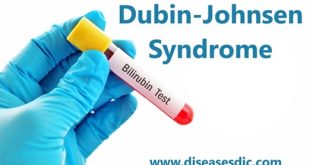

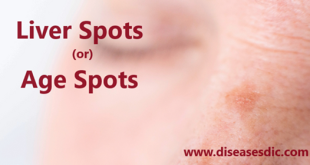

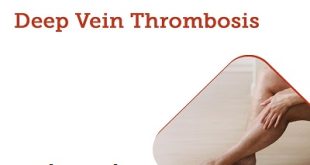
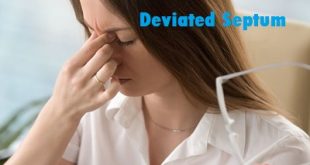
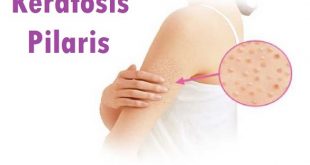

Exellent article….. Hope so it will be helpful against dandruff….. thanks for ur hardwork and suggestions.
what about the eye chloroquine method
Chloroquine retinopathy, also known as Bull’s eye maculopathy,[2] is a retinopathy (damage of the retina) caused by the drugs chloroquine or hydroxychloroquine, which are sometimes used in the treatment of autoimmune disorders such as rheumatoid arthritis and systemic lupus erythematosus. This eye toxicity limits long-term use of the drugs.
Thank you it is very educative.
Thanks
for the lecture on dandruff.
Thanks for the lecture on dandruffs. I really enjoyed the lecture.
The article is quite educative and simple to comprehend. keep it up!
nakapagbibigay na po kayo ng dagdag na kaalaman, nakakatulong pa kayo para mapagaan ang problemang pinansyal na may kinalaman sa kalusugan. maraming salamat at mabuhay po kayo!!!
Very educative,and helpful.THANKS!
the information has been helpful
pls my back head is full bumps scratching me , if i cut my hair it will come out more. what shall i do.
help me. thanks
please consult a dermatologist.
I have been battling wit dandruff for a very long period of time, I’m going to make use of some of the ingredients u mentioned! I prayed it worked for me.. Thanks
I need information,because of dandruff ,body skin also spreading this disease or not ? like etching
Yes due to dandruff, skin will also get diseased.
PLEASE HELP. I have been fighting dandruff for months using dandruff type shampoos. To no avail. It seems the scalp has this white moist pieces when hair is washed and appears on shoulders of clothes, and brush or comb. When scalp is dry there are white crusty bumps. Does wearing a cap or head bands a problem? Is it contagious? Is coconut shampoo and conditioner, or Tea Tree Oil helpful? Would you please recommend a treatment plan?
It is better to get a prescription from a dermatologist.
I feel I am having wet dandruff…I do apply coconut oil 5 days a week… when it itches & i scratch blackish greasey things get into my nails…so I feel it is wet dandruff…..once in a week I have shampoo head bath & leave it no applying oil…is this ok..
Kindly suggest me a suitable remedy to get rid of this wet dandruff…or how I should maintain to be dandruffless…
.
Please apply Aloe vera gel before getting the head bath or it is better to get advice from a dermatologist.
Very informative article. Most of the people struggle with a variety of hair problems such as hair fall, itchy scalp, dry flakes, dandruff or other serious hair issues. These tips are very helpful for healthy hair care routine. Thanks for sharing and keep guiding us.
please i need d picture of all the shampoo
We will update at the earliest. Keep supporting our app with your comments and suggestions.